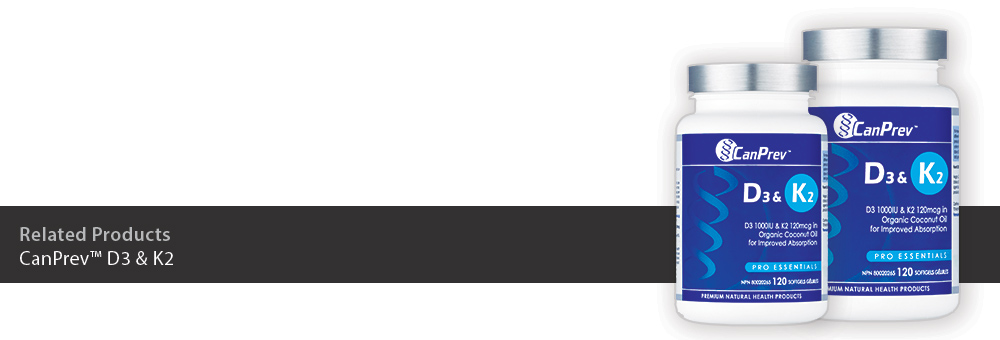

Better Together: Vitamin D3 and K2
Calcium isn’t the only bone building star in the spotlight anymore! Vitamin D3 and K2 are the dynamic duo that keep our bones, heart, and immune system happy and healthy.
Vitamin D3 and K2 alone are superstars in their own right, but when paired together they work to support the absorption and utilization of calcium and phosphorus to build and maintain healthy bones and teeth. Vitamin D3 assists with absorbing calcium from the intestinal tract and K2 ushers the calcium into the bone where it belongs.
What’s the difference between vitamin D and D3?
Vitamin D as a whole is known for its role in keeping our immune system healthy. It’s so important in fact that our immune cells have a receptor for it. Vitamin D also plays a role in neurotransmitter function, that impacts mood and energy and it helps us to maintain healthy bones and teeth.
Vitamin D supplements are usually made from one of two forms: D2 or D3.
Vitamin D2 (ergocalciferol) is photosynthesized in plants, mushrooms and yeasts and typically used in vitamin D fortified foods.
Vitamin D3 (cholecalciferol), is known as the “sunshine” vitamin. Unique because of its ability to be easily synthesized by the body when the sun’s UV rays strike the skin. It is the most natural form of vitamin D and in most cases supplemental form offers superior absorption compared to vitamin D2.
What’s the difference between vitamin K and K2?
Vitamin K2 is best known for supporting normal blood clotting, but scientists have now identified 17 different Vitamin K dependent proteins (VKDPs) that fulfill functions ranging from building bone matrix, preventing arterial calcification, increasing insulin sensitivity, to renewing tissue and sweeping dead cells away.
Since its discovery in 1929, vitamin K has actually been uncovered as a family of fat-soluble vitamins, rather than just a single vitamin.
So far, there are three identified forms of vitamin K:
Vitamin K1 (phylloquinone) which represents 90% of our total dietary intake in K vitamins, mostly coming from green plants.
Vitamin K2, which is a collection of molecules called menaquinones ranging from MK-4 to MK-14. Some, made by natural bacteria in the intestines.
Vitamin K3 (menadione), a synthetic version of vitamin K.
The two most commonly utilized forms of vitamin K2 are MK-4 and MK-7. Vitamin K2 MK-7 has a significantly longer half-life in the human body, meaning it sticks around longer and is therefore able to successfully reach more areas of the body than it’s MK-4 and vitamin K1 counterparts. Most vitamin K2 supplements are sourced from soy, a common allergen. A great alternative is CanPrev’s unique plant sourced, soy-free K2 MK-7, in a 100% bio-active and stable form.
Signs and Symptoms that you may need more Vitamin D3 & K2:
When our skin is exposed to sunshine, we’re able to generate our own vitamin D3, yet still an estimated 40% of Canadians aren’t getting enough. This is especially troublesome when the winter rolls around and our skin is bundled up under layers of warmth.
Signs and symptoms of insufficient vitamin D3 levels are:
- Fatigue
- Brittle bones, teeth and nails
- Bone and muscle pain
- A weak immune system
- Low mood
K1 deficiency will likely show up as overt bleeding and bruising, but vitamin K2 deficiencies largely remain undetected until it is too late as there is no single sign or symptom that marks a deficiency. Signs like low bone density and arterial plaque build up may take years before they are detected.
How much should I take daily?
To find out if you’re deficient in vitamin D3, ask your Naturopath or Medical Doctor to run a blood test and recommend a sufficient daily dose for your unique situation. When it comes to vitamin K2 status, there is no standard method to test long-term nutritional status.
Get the benefits of a sunshine filled vacation every day of the year with CanPrev D3 & K2 softgels or liquid. Along with choosing the active, preferred forms of D3 and K2, CanPrev includes an organic coconut oil base, a stable fatty acid that enhances the absorption of these fat-soluble nutrients.
One softgel or four drops of liquid provides 1000 IU of D3 and 120 mcg of K2. We encourage you to follow label directions and always consult with your healthcare practitioner.

